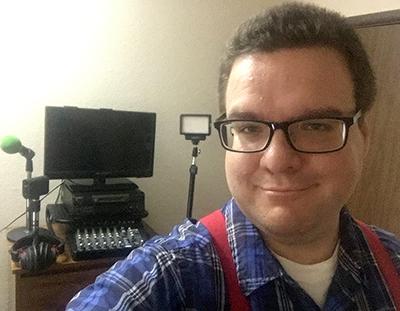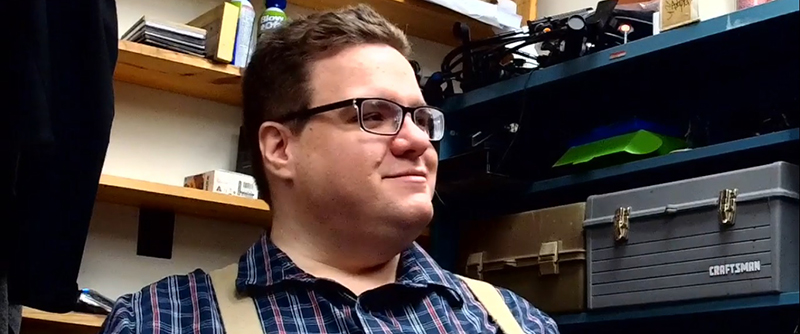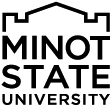
By Emily Schmidt
University Communications Student Assistant
studentpio@minotstateu.edu
MINOT, N.D. – Are there any intersections between English and computer science? According to professor Samuel Stinson, there are more than one may imagine.
Since he joined the Minot State Division of World Languages and Cultural Studies in 2019, Stinson has been active in providing creative insights on the worlds of writing and technology. While his first step, a bachelor's degree from Western Kentucky University, included a double major in both fields, his path to Minot State was far from linear.
“About the time I'd finished my B.S. I had been interested in working as a software engineer, but my religious interests led me to want to preach full time and preparing to do that meant taking the B.A. in biblical studies for training for that work,” he said.
He was drawn back to his roots nevertheless when he returned to Kentucky for his master’s in English literature and moved to Ohio for his doctorate in rhetoric and composition.
“I'd say that all along writing was still with me, as part of what I was doing, first in my English coursework, then in composing programs and media, then in writing sermons,” he said.
Today, Stinson shares his knowledge of writing in both undergraduate and graduate classes while putting his technological skills to use in hosting “The Lookout” PODCAST, where he features MSU students, faculty, and staff for their involvements on campus.
“I’m convinced that all of the fields along my path have had similarities in that they require a hyper awareness of literacy,” he said. “I think that is what has driven my interests and curiosity, realizing that the literacy of reading and writing, the textual, social, and linguistic literacies of biblical studies, and the technical literacies of computer languages all require not just symbolic manipulation but an awareness of how literacies provide social traction and can assist in a certain kind of social and personal access for those who acquire them.”

Once students become literate in writing, he believes, it is important to be adaptable.
“Writing transfer fascinates me because it is about contexts and how students move from one context to another, adapting what they know of how writing works while learning about the writing they’re required to use in their new settings,” he said. “In short, as Doug Downs has said in my field, writers, not just writing, are what transfer from place to place.”
Another one of Stinson’s unique takes on writing is the idea that writing, itself, can become a technology.
“There is always more to know since writing and technology both reflect the needs and literacies of the audiences we communicate with,” he said. “Each of them can be improved with updates and can be reflected upon nostalgically for their earlier drafts and states-of-the-art, but ultimately, writing and technology accomplish a purpose that is constantly changing as cultures change.”
Stinson sees this as an opportunity to prepare students for the real world.
“When we teach writing to students, we do them a great service to help them connect with the types of writing they’ll encounter when they graduate,” he said. “What I’ve described here is not just curiosity about the future, but the present of how writing works now.”
Learn more about Stinson’s ideas on writing transfer by reading his most recent PUBLICATION in “Composition Forum.”
About Minot State University
Minot State University is a public university dedicated to excellence in education, scholarship, and community engagement achieved through
rigorous academic experiences, active learning environments, commitment to public service, and a vibrant campus life.
Published: 02/05/21



